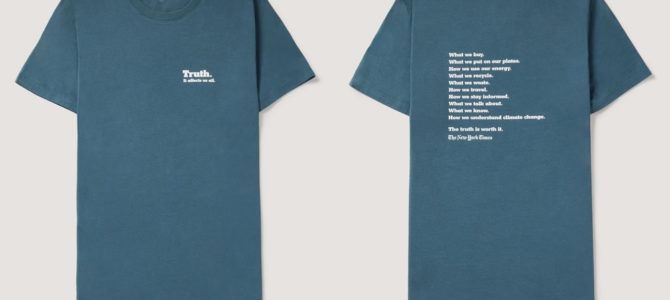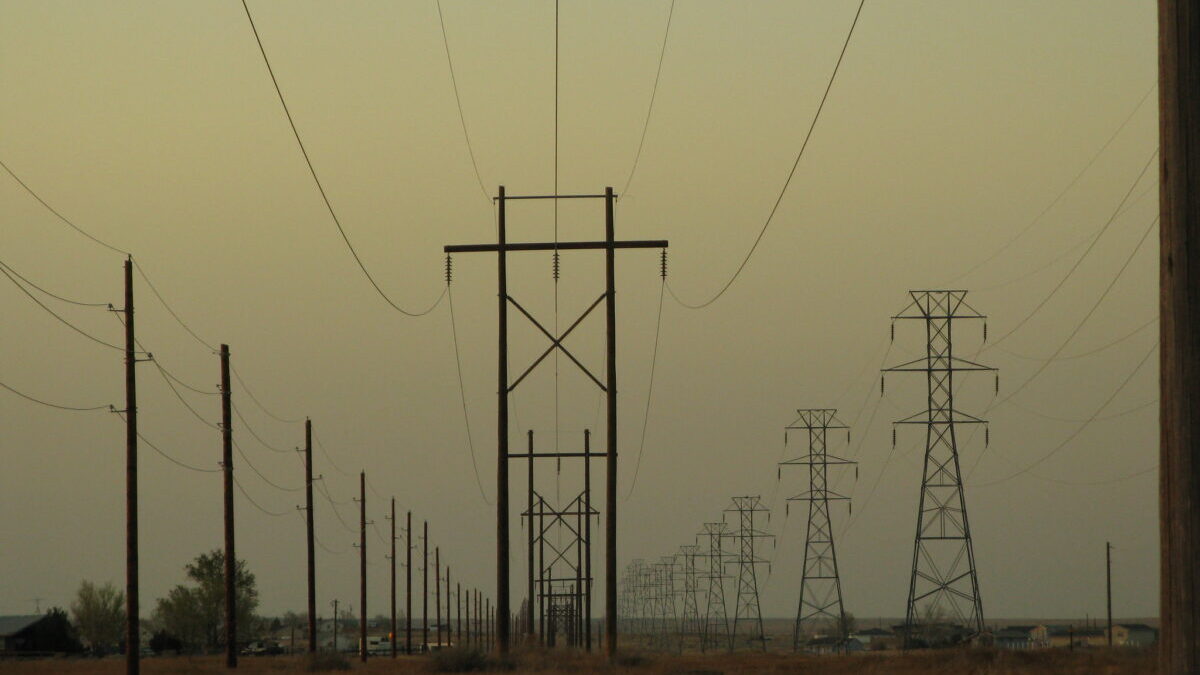
This year for Earth Day, do something truly revolutionary to show your support for raising awareness about climate change: buy a sweatshirt from Everlane! Everlane has teamed up with The New York Times, and the result is cotton wear. Purchasing just one of these T-shirts or sweatshirts will fund New York Times subscriptions for nine public school students in the U.S.
Emblazoned with the word “Truth,” these shirts in subtle, naturalish tones simply scream awareness. They’re the kind of T-shirts that can really make a person feel good about his contribution to reducing planetary waste, and his carbon footprint. But that’s only because the wearer has convinced themselves of that, not because the shirts actually do anything worthwhile.
Clothing retailer Everlane touts “Exceptional quality. Ethical Factories. Radical Transparency.” They have a pay what you wish program, where selected items are for the low price of pretty much whatever you want. Their website is as in-depth on their factories and employee appreciation programs as it is on their $100 cashmere collection. The gear they move looks pretty nice, and it’s even refreshing to see a company take responsibility for its human impact.
The New York Times has been vocal on the present and future effects of climate change. For all of their in-depth research and reporting, however, they don’t do much coverage of efforts to adapt to climate change. Instead, they issue dire warning and retributions, excelling in efforts to raise awareness about how humanity must stop the very progress that has generated the wealth necessary to alleviate poverty.
Times staff wrote the verbiage for the shirts: “Truth. It affects us all. What we buy. What we put on our plates. What we recycle. What we waste. How we travel. How we stay informed. What we talk about. What we know. How we understand climate change. The truth is worth it.” Of course truth is a dicey term these days, where it’s been appropriated from noun to adjective (truthy, anyone?), and everyone seems to have his own.
If Everlane really wanted to give New York Times subscriptions to dozens or even hundreds of school children, it would be substantially more sustainable to provide those subscriptions without unleashing a whole batch of new, wastable clothing upon the world. The only problem is that simply funding some news subscriptions wouldn’t do anything for their marketing, or for consumers who want people to know just how much truthiness they are on board with.
What good are clothes if they can’t show everyone how much you believe in sustainability? So what if you’re participating in an industry that contributes exponentially to the worldwide waste chain? The Environmental Protection Agency estimates that the average American tosses 81 pounds of clothing are tossed each year, and that despite the potential for up to 95 percent of textiles to be recycled, 85 percent end up in landfill.
Fast fashion, decline in clothing quality, and a perpetual trend cycle contribute to the drastic increase in clothing manufacturing. The swell in cheap clothing means that it can easily be jettisoned at the end of any number of micro seasons when the stitching wears out, the color fades, or the fashion is no longer relevant.
Getting rid of clothing that no longer fits, is no longer worn, or is no longer stylish, is also part of our self-congratulatory consciousness. Just as we are encouraged by big retail to buy until our closets are glutted with unwearables, we are encouraged to throw it all out, ideally via recycling programs or in the form of charitable donations.
How many truth-labeled, altruistic, cotton T-shirts and soft terry sweatshirts made by Everlane for the benefit of The New York Times’ proliferation in public schools will end up in landfill just a few, short years from now, or even months? Will the “Truth” label, and the virtuous sound bites, still be legible when the clothes are boxed, packed on barges, and sold in textile markets in the developing world? With they feel as quippy and righteous when they land in heaps of solid waste on the tall, growing mountain of our discarded textile trends?
If Everlane and The New York Times had actually considered this joint endeavor before manufacturing the clothing, they might have come up with the even more sustainable idea of just not doing it at all, and providing student subscriptions without having to make a whole bunch of T-shirts about it. This useless undertaking is all about the visual virtue, and not about the actual goal at all, which at its best is education, and at its worst is mere marketing.









